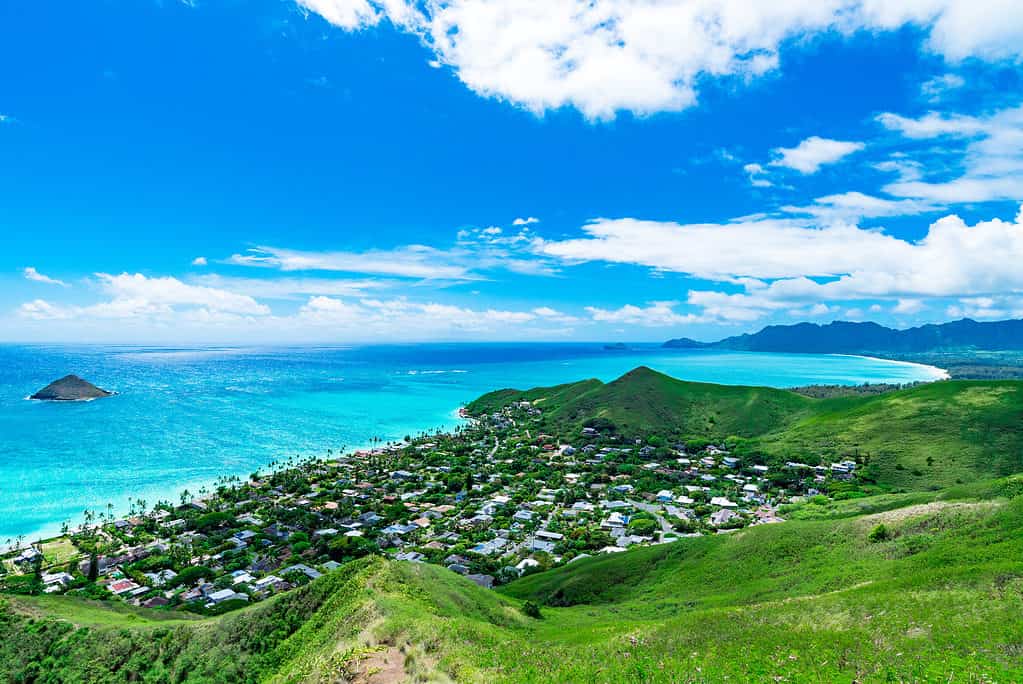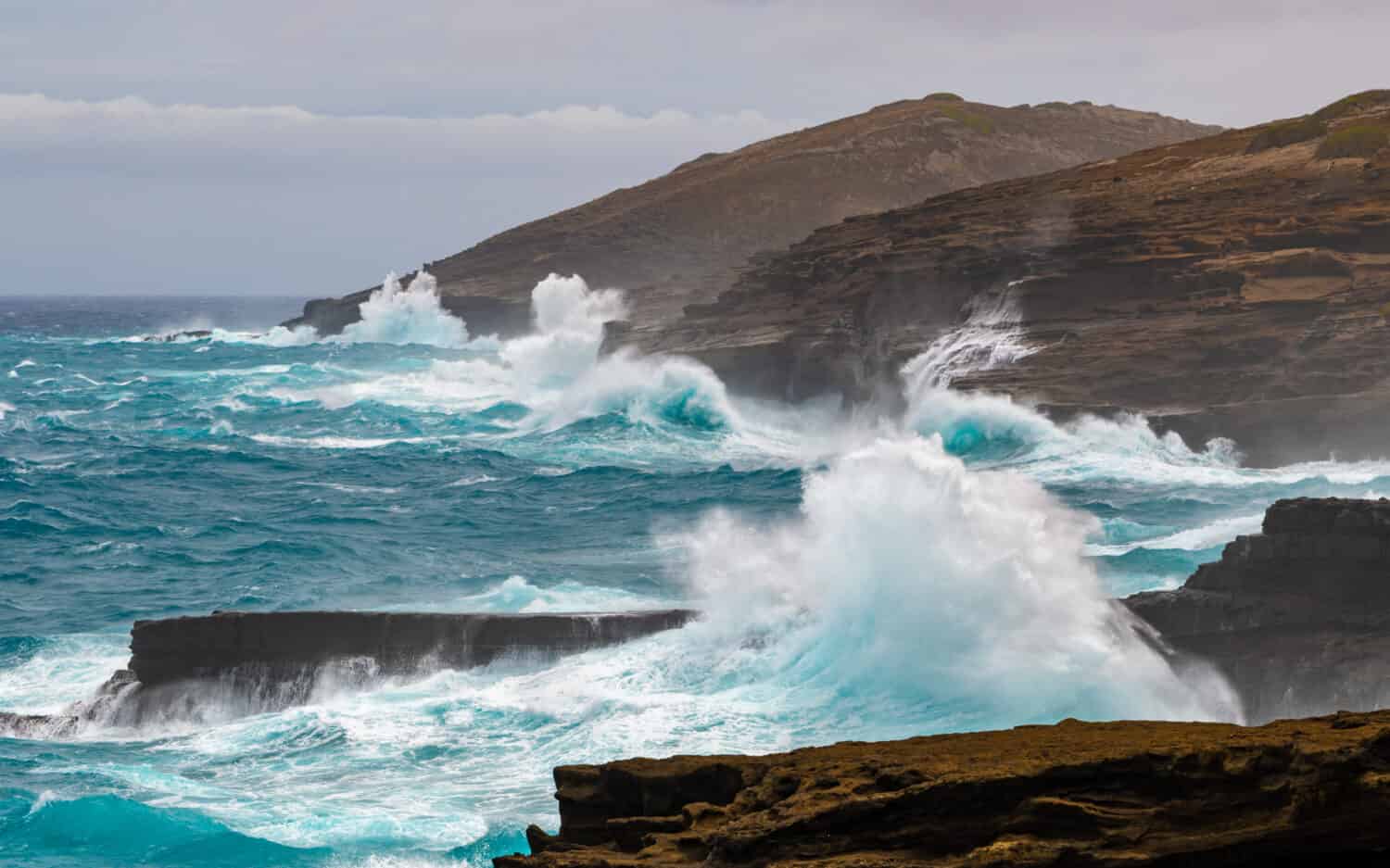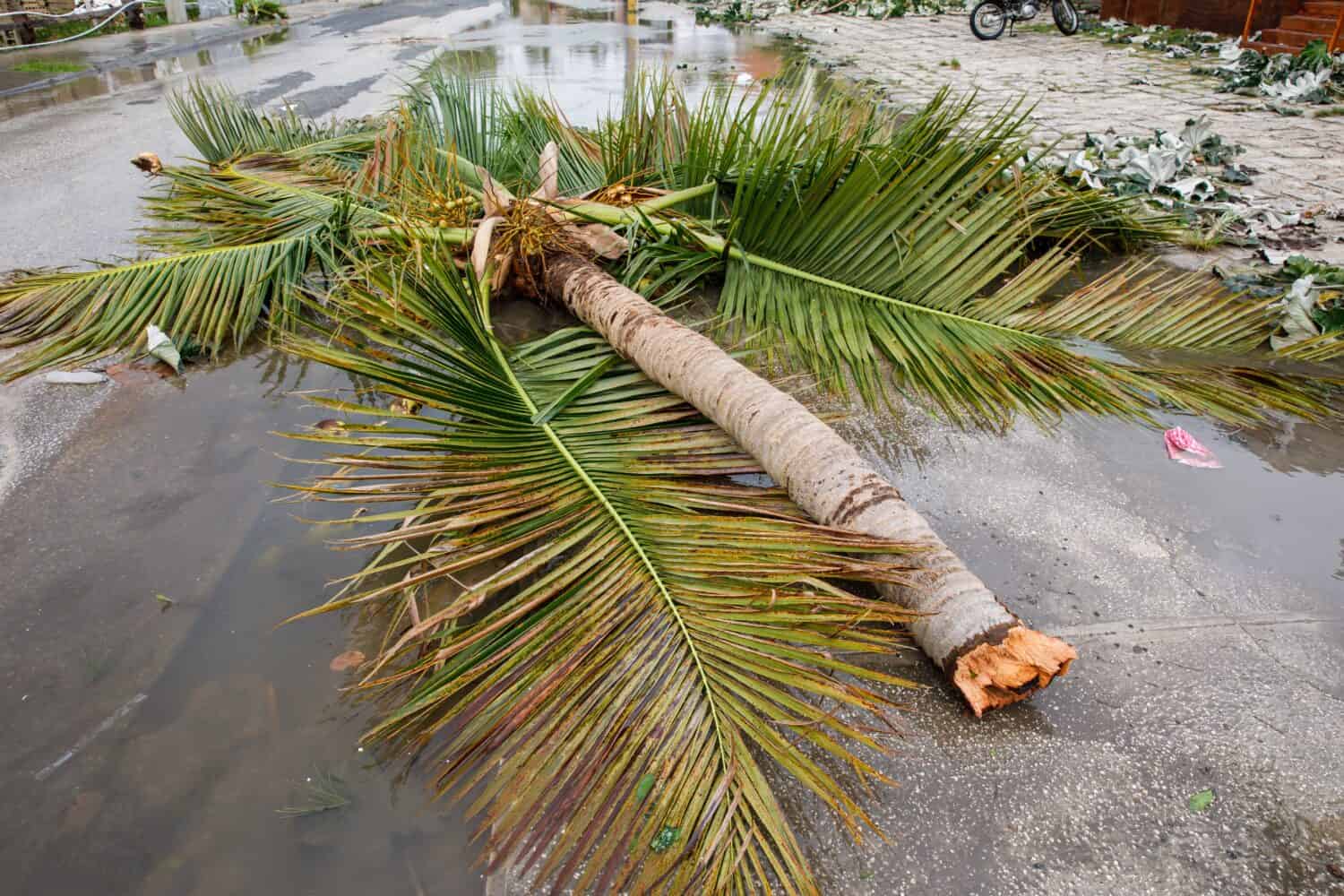Hawaii is a great place to surf, relax, and enjoy local culture and foods. The islands are surrounded by crystal waters on each side, making it a popular tourist destination. If you’re traveling to Hawaii, it’s important to know when hurricane season is to prepare for your trip. If you live in Hawaii, it’s even more crucial to be aware of when hurricane season starts and ends.
Hurricane season in Hawaii occurs from June through November and tends to peak in August.
This is because hurricanes most commonly occur when the weather is warm. Warm ocean waters are key to turning thunderstorms into larger systems like hurricanes. Hawaii is also surrounded by water, so you’d expect hurricanes to have a pretty good chance of occurring in the state. However, Hawaii has only been hit directly by five hurricanes or tropical storms since 1950.

Hawaii is a beautiful tourist destination when the weather is good.
©segawa7/Shutterstock.com
Why Do Hurricanes So Rarely Hit Hawaii?
Hawaii is in the middle of the ocean, surrounded by warm waters that make a perfect recipe for hurricanes. So why is it that so few hurricanes actually hit the islands? First of all, Hawaii is located within the flow of the easterly trade winds. These winds are strong, so when a hurricane comes toward Hawaii the winds will push back and prevent it from actually hitting. Also, while most of the pacific ocean holds very warm water, the water directly around Hawaii is usually pretty cold. Cold water makes hurricanes dissipate quickly, slowing the winds and storms. Many hurricanes occur in the Pacific, but the ocean is large and in comparison, the islands are quite small. This is why so few hurricanes have actually affected Hawaii after all this time.
How Often Do Hurricanes Hit Hawaii?
Hurricanes rarely hit Hawaii directly. Since scientists began tracking the storms in 1950, only around 30 hurricanes have come within 200 nautical miles of the islands. This is great news for travelers who usually visit the state during the warm summer months.

Since scientists began tracking the storms in 1950, only around 30 have come within 200 nautical miles of the islands.
©Phillip B. Espinasse/Shutterstock.com
Where Do Hurricanes Normally Hit in Hawaii?
Out of the five storms that have directly impacted Hawaii, only two passed directly over the islands. The eye of Hurricane Iselle passed over the Big Island of Hawaii in 2014. Hurricane Iselle was a category 4 storm as it moved across the Pacific. However, by the time it reached the island, it had reduced to a tropical storm. The storm did massive damage to the island, causing power outages, heavy crop damage, and flooding. There was one fatality from the storm, which occurred on the island of Kauaʻi because of flooding from the storm.
The other storm that hit Hawaii directly was Hurricane Iniki. It passed through Kauaʻi in 1992. It was the most powerful storm to hit Hawaii in history. Iniki hit the island at a category 4 status. It was the most expensive natural disaster to affect the state, and also the most lethal, causing six deaths. It also caused injury to over 100 people. Iniki destroyed 1,400 houses and damaged more than 5,000. It was a difficult disaster for the state and nation, especially since Hurricane Andrew had decimated Florida just one month prior.

High winds destroyed neighborhoods and flash flooding damaged homes in Kauaʻi.
©mayakova/Shutterstock.com
What Part of Hawaii Is the Safest from Hurricanes?
The islands that have been directly affected by hurricanes are Kauaʻi and the Big Island. Therefore, the safer islands are usually the ones in the middle. Of course, Hawaii is one of the smallest states by land mass in the U.S. So when one part of the state gets hit by a hurricane, all of the islands will usually feel the effects. There are not many areas in Hawaii that are safer than others, but inland areas are least at risk of major effects. This is because hurricanes lose power as they cover more land. Also, inland areas are less at risk of flash flooding and storm surges than places along the coastline.
Earliest Hurricane to Hit Hawaii
Tropical Cyclones Eugene and Darby were the two earliest storms of the season to affect Hawaii. They both began affecting the state on July 24. Tropical Depression Eugene hit the southern side of the Big Island in 1993. It caused minor damage and a few power outages. It may also be responsible for the death of a fisherman, but that fact was never confirmed.
Tropical Storm Darby also hit on July 24 but of the year 2016. It also made landfall on the Big Island. It caused heavy rain, flash floods, and road closures, but did not cause any fatalities.
The earliest hurricane to hit Hawaii was Hurricane Dot, a category 1 storm when it struck on August 6, 1959. Hurricane Dot made landfall on Kauaʻi, but it affected the entire state with its strong winds and flash floods. It caused extensive damage to structures and agricultural crops, as well as two indirect casualties.

Tropical cyclones Darby and Eugene caused minor damage to the islands including downed trees.
©Aleksandr Rybalko/Shutterstock.com
The photo featured at the top of this post is © Trong Nguyen/Shutterstock.com
Thank you for reading! Have some feedback for us? Contact the AZ Animals editorial team.






